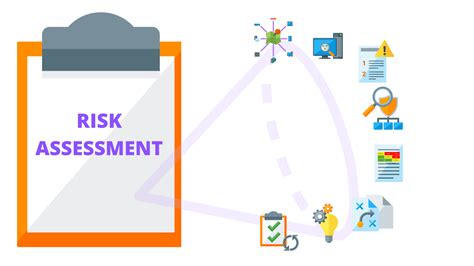How to perform a risk assessment for cryptocurrency investment
The world of cryptocurrencies has grown in recent years, many investors who have tried to capitalize on the potential of this emerging market. However, with a great opportunity, it has a high risk and it is essential to perform exhaustive risk assessments before investing in cryptocurrencies.
In this article, we will explore the importance of carrying out a risk assessment for cryptographic investments and we will give it a step guide by step on how to do it.
What is a risk assessment?
A risk assessment is an evaluation of the potential risks associated with an investment. It implies the analysis of several factors, such as market trends, technological progress, regulatory changes and other external factors that could affect the value or performance of a cryptocurrency.
Why do a risk assessment for cryptocurrency investment?
It was known that cryptocurrencies were extremely volatile. Prices can fluctuate quickly due to several factors, including market feelings, economic conditions and regulatory updates. Making a risk assessment helps it:
- Identify potential risks : Understand potential risks associated with each cryptocurrency, can make more informed investment decisions.
- Diversify the portfolio

: A risk assessment allows you to diversify your portfolio spreading investments in different cryptocurrencies to minimize exposure to any asset.
- Establishing realistic expectations : Understanding the risks involved in cryptocurrency investment allows you to establish realistic expectations and avoid making impulsive emotions.
Step by step guide for a risk assessment for cryptocurrency investment
- Research, research, research
Start researching different cryptocurrencies, its market trends and potential risks. Read renowned sources, such as Coindesk, Coindesk and Bloomberg, to be informed about the latest developments in the cryptocurrency market.
- Evaluate market trends
Look at the historical movements of the prices of different cryptocurrencies to understand their trends. Identify any significant change in market feeling or the behavior of investors that could affect prices.
- Evaluate technological advances
Consider technological progress in each cryptocurrency, such as the development of blockchain, intelligent contracts and scalability solutions. Evaluate whether these progress could lead to long -term increases or present significant risks.
- Evaluate the regulatory environment
Research regulation updates and changes that affect different cryptocurrencies. Understand how prices or commercial activity can affect.
- Evaluate market competition
Analyze the competitive panorama of each cryptocurrency investigating competitors, market share and possible barriers at the entrance.
- Diversify the portfolio
Propagation investments in different cryptocurrencies to minimize exposure to any asset. Consider investment in a combination of newer dedicated players and more participants to maximize yields.
- Monitor and adjust
Continuously control the risks associated with each investment and adjust the portfolio as necessary. Be prepared to pivot or sell assets if your risk profile becomes unfavorable.
Examples of cryptocurrencies and their risk profiles
- Bitcoin (BTC) : o Extremely volatile cryptocurrency, with a large market capitalization. It is considered one of the most stable cryptocurrencies, but also has the highest level of risk.
- Ethereum (ETH) : A decentralized platform for the construction of intelligent contracts and decentralized applications. Its high volatility is made by a high -risk investment.
- Litecoin (LTC) : o Cryptocurrecy peer-to-peer with a strong community and augmented adoption.